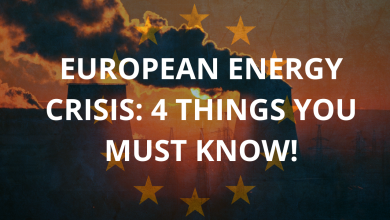Retail Sales Unexpectedly Dropped in May

Retail sales unexpectedly dropped in May, casting doubt on Federal Reserve Chairman Jerome Powell’s “the American consumer is healthy” narrative.
During his press conference following the June FOMC meeting, Powell insisted, “Overall spending is very strong. The consumer is in really good shape financially. They’re spending.”
Well, that “very strong” spending suddenly and unexpectedly fell in May. Retail sales declined by 0.3%. The projection was for a 0.1% increase in retail sales.
April’s number was revised down from o.9% to 0.7%.
A steep drop in automobile sales pushed overall retail sales lower. Excluding autos, sales were up 0.5%, but this still fell short of the expected 0.8% increase.
A drop in big-ticket purchases such as autos serves as a canary in the coal mine. As consumers begin to feel the pinch of inflation, they cut the big purchases first.
Miscellaneous store retailers experienced a 1.1% drop in sales. Online shopping declined by 1%.
Continuing the “eat, drink and be merry” trend we saw in May, Americans are still spending money at restaurants and bars. Sales rose 0.7%.
Unsurprisingly, gas stations saw a big 4% jump in sales thanks to surging gasoline prices.
In the previous several months, retail sales surprised to the upside. The mainstream spun this as good news, telling us it signaled a strong economy. They said Americans were spending more “despite” rising prices.
In fact, Americans were spending more because of rising prices. And now they’re spending less despite rising prices.
Even when sales were rising, it was clear that Americans weren’t buying more stuff. They were simply paying more for the things they were buying. Rising prices accounted for the entirety of those sales increases.
Retail sales data is not inflation-adjusted. Since sales are expressed in dollar amounts, they reflect both units sold and rising prices. That means there are two ways retail sales can go up.
- Consumers buy a larger quantity of stuff.
- The price of the stuff they’re buying goes up.
In other words, just because dollar widget sales increase doesn’t mean people bought more widgets. It could be that they bought fewer widgets but paid more for them.
This is exactly what happened in many retail sales segments over the last several months. May’s numbers indicate that consumers are slowing their spending. They’re still paying more. But they’re buying even less stuff.
How Are We Paying for All This?
The mainstream claims that wages are rising and that enables Americans to keep up with rising prices. The problem with this narrative is that real wages aren’t keeping up with rising prices.
Average hourly wages rose by 0.3% from April to May, according to Bureau of Labor Statistics data. But you still took a pay cut. Factoring in inflation, real wages dropped by 0.6% month on month. Over the last year, real wages have fallen 3%.
This explains why consumer sentiment has reached historic lows.
So, how are Americans paying for stuff?
They’re dipping into savings and they are putting it on their credit cards.
Revolving credit, primarily reflecting credit card debt, rose by $17.8 billion in April. That was up a sizzling 19.6%. This follows on the heels of a record 29% gain in March. Revolving debt now stands at $1.103 trillion, just slightly above the pre-pandemic record.
And Jerome Powell claims “the consumer is in really good shape.”
Not so much.
Call 1-888-GOLD-160 and speak with a Precious Metals Specialist today!
Buka akaun dagangan patuh syariah anda di Weltrade.
Source link







